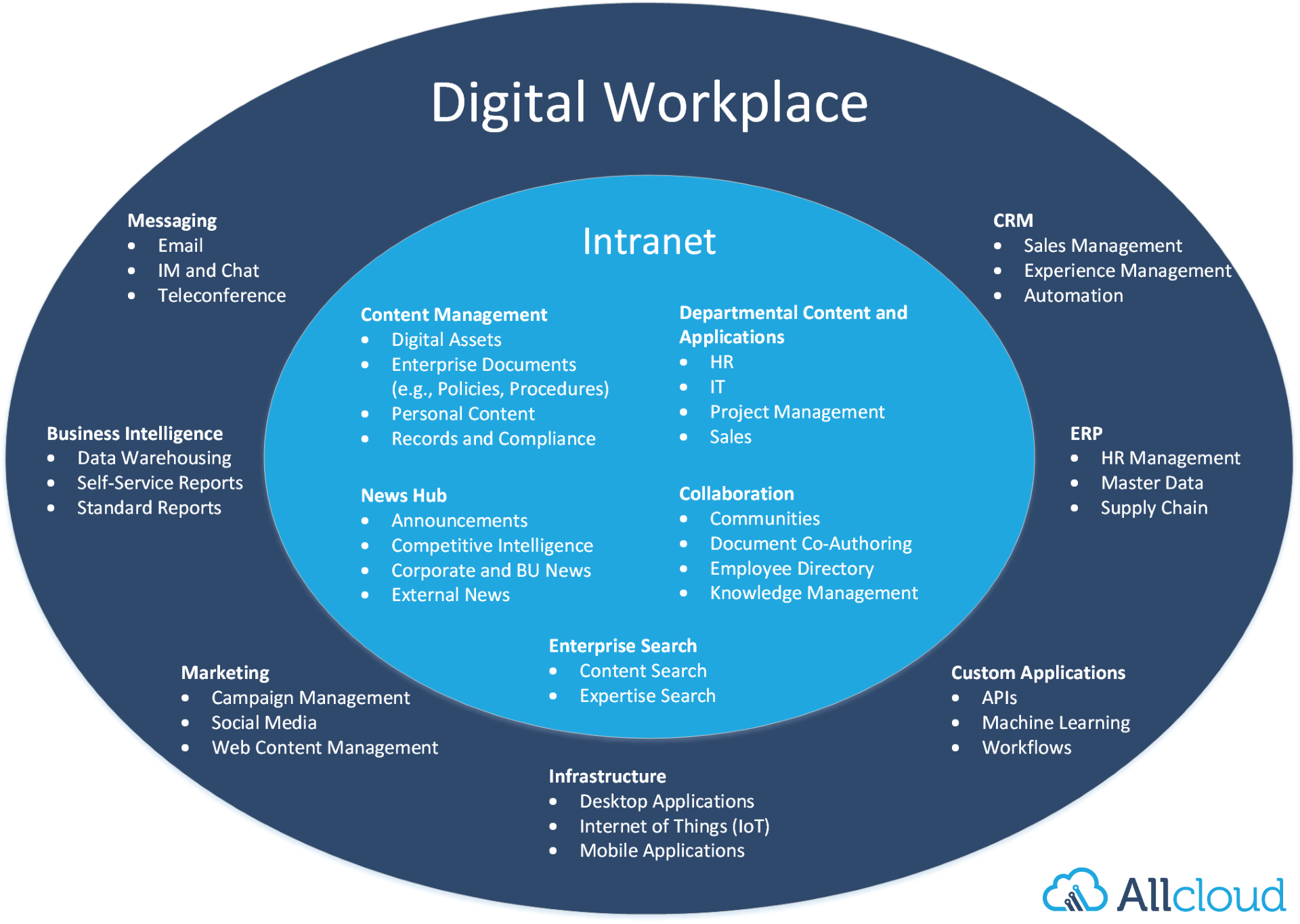
Evolution of the Digital Workplace
This is an excerpt from Designing Modern Intranets Using Office 365.
A Brief History of Knowledge Work
Every industry has been transformed since the information revolution of the 1990s. Thanks to the Internet, ubiquitous computing, and globalization, virtually every company is now reliant on technology and information to compete.
The term “knowledge worker” was first coined by Peter Drucker in 1957 to describe employees whose primary capital is knowledge. Knowledge workers were considered specialized. They spent most of their time researching, problem solving, and creatively thinking.
Today, virtually every office job relies heavily on knowledge work. A 2006 study estimated that 80% of all North American workers are knowledge workers and that number rises each year. We now live in an “information economy”, where the success of organizations is dependent on their ability to generate and apply knowledge.
Introducing the Digital Workplace
The world is digital, and there’s no going back.
For centuries, organizations amassed physical assets and wealth as competitive advantages. In just a few decades, the value of tangible goods has been surpassed by the value of intangible goods. Data and technology are now the keys to market disruption, while physical inventory is seen as a liability.
We spend an alarming amount of our time in front of screens. According to Mary Meeker’s 2014 internet trends report, the average American spends 7.4 hours per day looking at screens (i.e., computers, tablets, smartphones, and TVs). Many of us spend the majority of our waking hours with a computer and that trend is only accelerating as millennials enter the workforce.
The “digital workplace” is now more essential than the physical workplace. Most of us can telecommute and conduct our jobs from anywhere, during any hour of the day. The majority of business will be conducted digitally going forward.
The Digital Workplace as an Analogy for your Office
The term “digital workplace” has grown in popularity in recent years, despite being overloaded with multiple meanings. Broadly, it’s the virtual equivalent to a physical workplace.
Think of your intranet like your office building. An immediate advantage is that there’s ideally only one intranet, no matter how many cities your workforce spans. It’s like bringing everyone under one roof.
Everyone’s workspace starts out the same, but like your desk, you can personalize your intranet homepage to focus on what you care about. On your desk are your tools and reference materials organized just how you like them. The most frequently accessed content is sorted and on top. Secure content is locked safely in a drawer. You may have a task inbox and outbox in the corner for tracking your projects and communications. Your calendar and contact rolodex sit neatly, automatically organized.
Down the hall are your colleagues, who you can bring together to collaborate easily without taking the elevator. Your department, functional, and project teams can be messaged or pulled together for a meeting. And you can stay engaged with the latest news around a virtual water cooler.
Just as your physical office was a project (requiring architecture, interior design, facilities staff, and security), the digital workplace requires planning and care. Both should cater to their employees, making it easy to collaborate and access the instruments they need. Any workplace has a unique balance of utility, aesthetics, and feng shui.
Your Intranet is the Key to Your Digital Workplace
Intranets are the cornerstone of the digital workplace movement. Employees expect to be able to find the tools, personnel, knowledge, and resources to get their jobs done in the digital workplace, just as they would in the real world.
Not everything needs to reside within your intranet. It’s better to pick and choose best-of-breed software than try to build a monolithic platform. However, it is crucial that everything is accessible from your intranet.

Your intranet is a digital hub, making it easy for everyone to do their jobs, collaborate efficiently, and stay engaged.
Let’s get started in planning your modern intranet.
